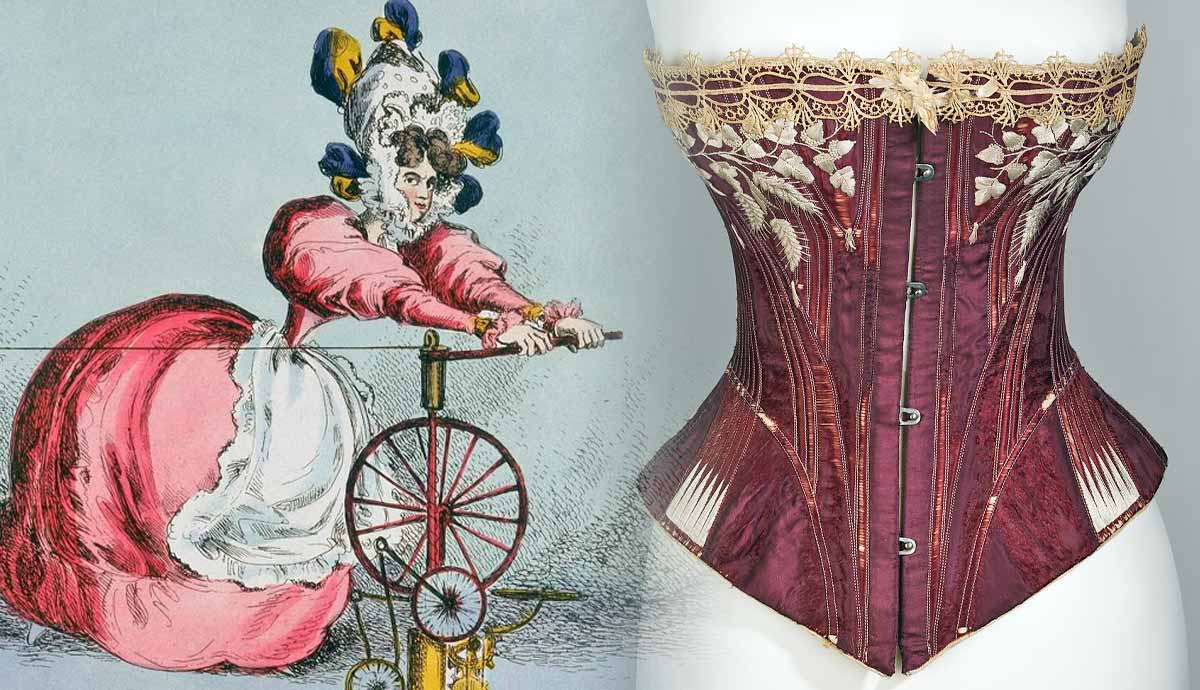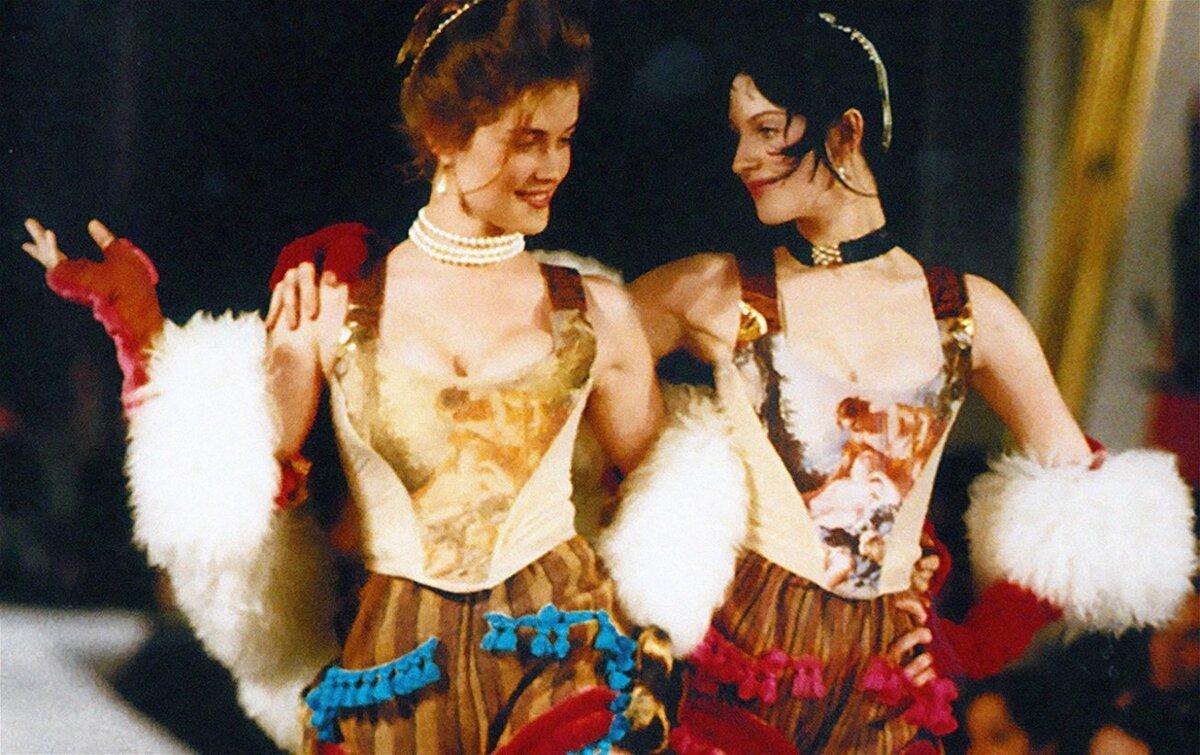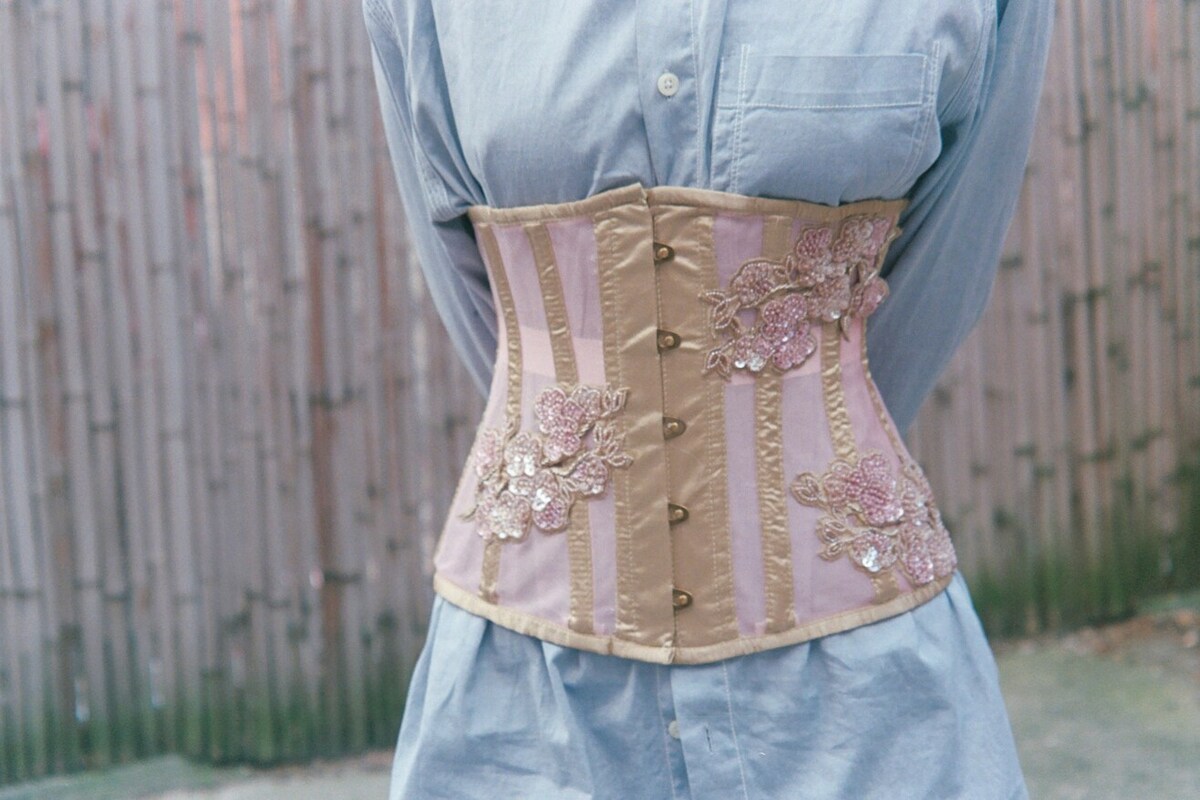There’s no doubt you’ve heard of corsets before. Though they fell out of fashion for a long time, in part due to their painful patriarchal reputation, corsets have been resurging in modern culture, and have been shown in all kinds of period pieces, from Bridgerton to Pirates of the Caribbean. They’ve been molding our idea of gender and femininity for centuries – but how? And how have they changed over time? Today, we’ll go over:
- Corsets’ intended usage
- How corsets have evolved over time
- How corsets are worn today
Without further ado, let’s dive in!
How Were Corsets Originally Used?
Function Or Fashion?

Though early versions of corsets were worn for support rather than shaping, the corsets you’re probably picturing came into being during the Renaissance, as fashion took precedence over function. These corsets were used to mold the body, emphasizing the figure defined as feminine by narrowing the waist and padding the bust and hips. Though people tend to view historical corsets as death traps, most women didn’t wear them that tight – rather than lacing them completely closed, most women actually left them open an inch or two, and corsets were typically advertised with a waist of 18-32 inches when fully closed.
Culturally, corsets were associated with wealth – if you had limited mobility, the implication was that you were wealthy enough to own servants to do your work (though working women also wore corsets, especially as corsets evolved to be more comfortable). Wealthy women often added more frilly layers and padding, and eventually panniers to widen the silhouettes of their hips, all of which showcased their status.
Additionally, corsets were also associated with respectability and morality – by controlling your body, you controlled your physical passions, so people of the time believed. In fact, as health concerns cropped up, corset manufacturers doubled down on the link between a woman’s worth and her willingness to mold her body, pushing the idea that “abandoning corsets would lead to sagging bodies and moral decay”. Advertisers claimed that corsets were necessary for a girl’s body to develop properly, and that young girls would form all sorts of bad habits without a corset (such as, god forbid, sitting improperly).
The Evolution Of Corsets Over Time
How A Garment Meant For Support Became A Symbol Of Wealth And Morality

Believe it or not, corsets – and bras in the sense that we know them – are a relatively modern invention. In the earliest records of undergarments, men and women wore the same thing: animal skin loincloths. Eventually, Ancient Greek and Roman women began wearing a sort of chest-binder called a strophium, which was essentially just a band of fabric tied around the bust for support and compression. Women also wore under-tunics beneath their clothes – but this all changed when the Middle Ages rolled around.
See, once the Middle Ages hit, it was considered masculine (and therefore taboo) for women to wear bifurcated garments, meaning they couldn’t wear bottoms – so those linen under-tunics were out of the question. Instead, women could only wear petticoats (underskirts) and chemises (a loose-fitting, shirt/dress-like undergarment) against the skin. Chemises were visible at the neckline and wrists, giving wealthier women chances to show off via lace and embroidery.
Though they were similar in some ways, other parts of the world, of course, had different undergarments – in the Middle Ages, women in the Fatimid Caliphate in Cairo typically wore a few more pieces, at least in conjecture (as the men recording the bridal trousseaux lists this historical information was pulled from would shy away from naming womens’ undergarments, listing them simply as “intimates”). Women tended to wear a qumîs (a chemise/shift) and sirwâl (referred to as drawers, but more similar to pajama bottoms, as they come down to the ankle). A tikka (an ornate drawstring) would be used to hold up the sirwâl (interestingly, sometimes young men would wear their lovers’ tikka, given to them as a token of affection). Under the qumîs would most likely be a rifada to support the breasts, similar to the strophium. A key way their undergarments would differ from Western undergarments, though, was the ma'raqa – worn by both men and women, this was a small, two-piece fitted cap that would absorb sweat and help keep the headwear (such as a turban or a hijab) clean.
Shifting back to the West, corsets first showed up in the 16th century as “pairs of bodies,” and were still designed for function over fashion – they were primarily for support, lacing around the waist to make the torso appear conical, and supporting the bust. As the Renaissance arrived, fashionable undergarments became more important, and wealthy women began adding layers of frilly undergarments, as well as more padding to achieve a specific silhouette.
As the 18th and 19th centuries rolled on, corsets called stays were introduced – these are typically the corsets people think of, the ones boned with whalebone or flexible steel to keep the wearer firmly upright, simultaneously compressing the waist and emphasizing the bust. The ideal silhouette grew more extreme, but as mentioned earlier, most women didn’t really wear them that tight. In fact, as the 19th century drew to a close, manufacturers started to use rubber and elastic, making it possible for women to comfortably wear a corset even while playing sports (bloomers were also introduced, in part for playing sports, but were largely considered too masculine at the time).
Corset culture saw a lot of upheaval in the 20th century – as women began to resist wearing them, some companies like Spirella doubled down on their necessity, while others developed corsets that were shorter and less restrictive. Function once again overtook fashion, especially as women entered the workforce en masse, and the brassiere was introduced, making it popular to once again split undergarments into tops and bottoms.
It should be noted that when it comes to historical undergarments, even the older garments that historians are more sure about, such as strophium, are mostly based on conjecture and educated guesses, as the fabric of many of these garments has decayed over time. Thus, historians have drawn their conclusions based on art pieces (such as a vase depicting women wearing strophium while playing sports), and on written records such as the Cairo Geniza. Some of the corsets in museums are real garments that have survived, but many are replicas, as even the ones that have survived are often too fragile to be handled directly.
Corsets Today
From Conformity To Freedom

The resurgence of corsets isn’t just due to period pieces, of course – if you’ve seen any kind of undergarment outerwear, such as slips, bras as tops, or visible corsets, you have Vivienne Westwood to thank. Debuted in 1987, Westwood’s corset had the shape of an 18th century stay, but was worn on the outside, featuring a zipper and stretchy paneling on the sides, making it simultaneously comfortable and attention-grabbing.
This, of course, is huge – rather than being something you force yourself into to mold your body, Westwood introduced the idea that you could choose to wear a corset, and actively enjoy it. Even more recently, a push in body positivity has furthered this undergarment-outerwear trend, following the idea that all bodies deserve to be shown off. Designer Nensi Dojaka even plays with the line between revealing and sexy, crafting revealing designs that aren’t particularly erotic in nature.
There are also artists out there using undergarments to challenge the idea of masculinity – Chin Yu Wang, for example, used the Victorian idea of the feminine silhouette to create his SS18 menswear, with looks that included long, lacy tops and even a nightdress (of course, nowadays, plenty of men wear corsets – they’re perfect for drag, or just for giving yourself some nice curves).
All in all, corsets have a fascinating and complex history (for more, check out "Fighting the Corsetless Evil: Shaping Corsets and Culture, 1900–1930” by Jill Fields), fueled by many different factors. We hope you enjoyed our basic overview!







